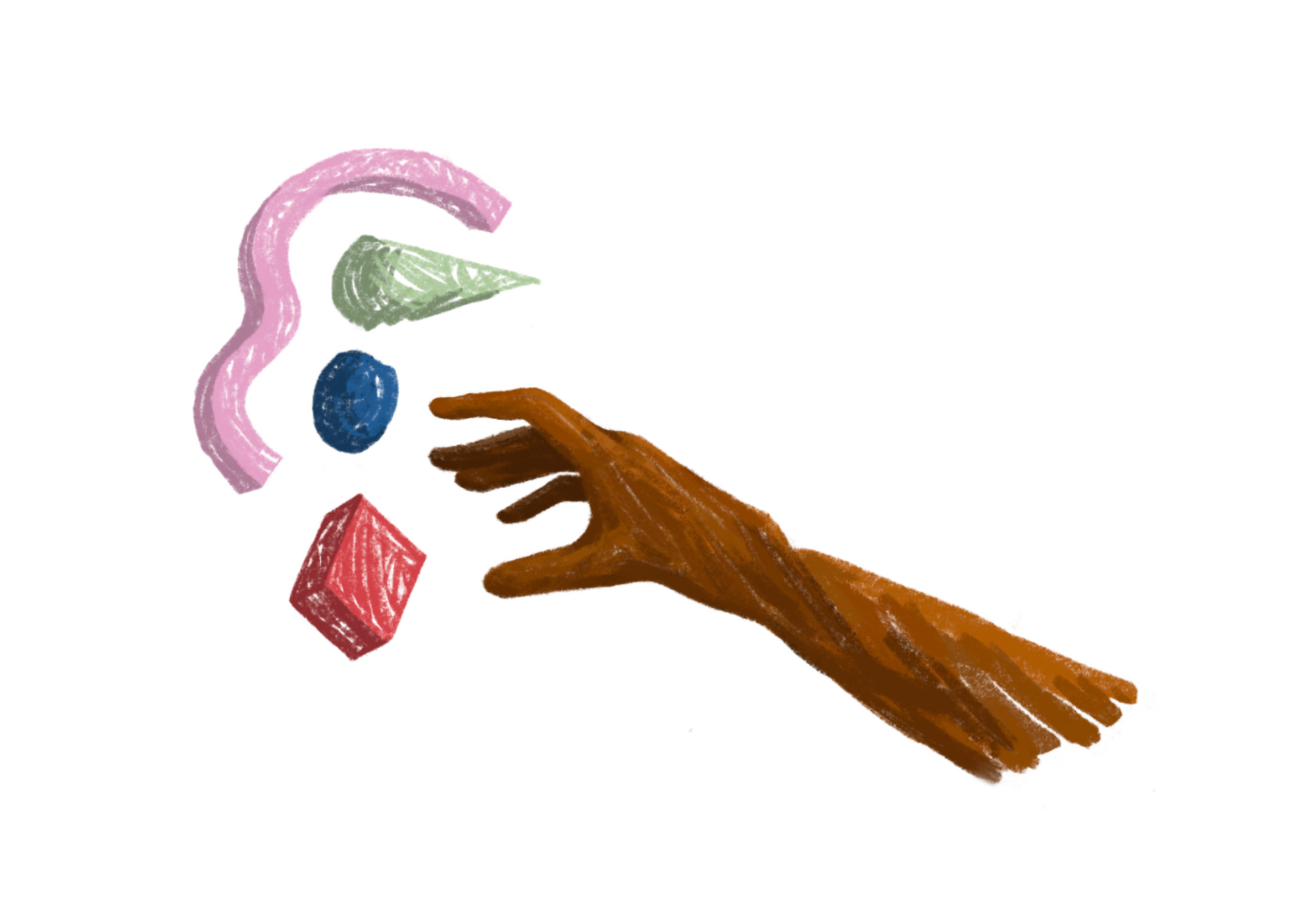In both public and medical understanding, attention-deficit/hyperactivity disorder (ADHD) is often thought of as a simple attention deficit. However, continuing research has found that it is a far more complex disorder. It can have a diverse variety of symptoms, to the point where ADHD in two separate people can look entirely different. There has been a recent increase in the awareness of ADHD, even in less well-known demographics such as ADHD in women and adults. However, many aspects of ADHD are still not generally understood, such as comorbidities, where those with ADHD are more likely to have another condition. A survey by the CDC found that 64% of children with ADHD also have another mental, emotional or behavioral disorder [1]. Common comorbidities include depression, anxiety, bipolar disorder, obsessive-compulsive disorder (OCD), and more. One that is less well-known, but can have a major impact, is sensory processing disorder (SPD), which causes abnormal responses to sensations like light or sound. Before exploring how SPD is related to ADHD, it is necessary to understand how each condition manifests independently.
ADHD
The most well-understood symptoms of ADHD are hyperactivity and impulsivity. However, ADHD is more precisely defined by its deviation from neurotypical attentiveness in any direction, meaning it can also present as hypoactivity or sluggishness. This type is called ADHD-I, or inattentive ADHD, to differentiate it from ADHD-HI, or hyperactive-impulsive ADHD [2]. Additionally, while ADHD is known for impaired attention, those with ADHD can also exhibit hyperfocus. Hyperfocusing is when a person is intensely focused on a task for hours, or sometimes days. While this may seem counterintuitive, both inattention and hyperfocus stem from the same inability to regulate focus. Hyperfocusing may appear beneficial at first, but while hyper focused, a person can lose track of time, forget to eat or sleep, and ignore their other responsibilities [3]. An individual patient’s symptoms can land anywhere on these two spectrums and can vary from day to day.

Sensory Processing Disorder
It can be difficult to understand the experience of someone with SPD, but one method that can help bridge the gap is to use familiar situations. For example, when you initially walk into a party, the sound is overwhelming. Every noise is at the same volume and your brain can't pick up on any individual conversations. However, once you’ve had time to adjust, your brain is able to filter out the background noise and focus on what's important, like the person talking to you or someone calling your name. If you had a certain type of SPD, this adjustment wouldn’t happen. Your brain would have a lowered ability to identify important sensory information, so the sound would remain as overwhelming as if you had just walked into the room. The same can be said of sensations like touch. Your shirt would always feel like you just put it on, where you can feel every seam and fold against your skin. Sensory input can even be painful, where light or sound might hurt as if you had a migraine.
Like ADHD, SPD exiss in a spectrum, where the disorder is defined by the deviance from the norm rather than whether sensory responses are amplified, like in the earlier examples, or depressed. The spectrum is broken down into three subtypes: over-responsivity, under-responsivity, and sensory seeking. Those who are over-responsive find sensory input more intense and sometimes even painful, like hearing nails scratch against a chalkboard. This is exacerbated if the input is sudden or unexpected. On the other hand, those who are under-responsive find sensory input less intense, as if their senses were numbed. One of the common symptoms is a high pain tolerance, which can lead to more injuries. Sensory seeking involves a desire for specific sensory input like listening to loud music, looking at bright colors, touching certain textures or eating very sour foods. It can either be motivated by those sensations being abnormally enjoyable or it can be a self-soothing behavior to avoid being overwhelmed, similar to how people might cross their arms or bounce their leg when they're upset. [4] SPDs appear to have a significant effect on children. Researchers at the University of Massachusetts conducted a study of almost a thousand children, from the ages of seven to eleven, and found that the parents of children with more intense sensory symptoms reported their children had more social-emotional problems such as anxiety and depression, as well as poorer social skills [5] This impact makes it all the more important for us to gain a better understanding of the mechanisms behind the disorder and how it relates to ADHD.

Comorbidity with ADHD
Recent research has found that children with ADHD are more likely to have SPD than neurotypical children. A study done at the University of Denver compared both parent-reported sensory symptoms and measures of autonomic nervous system activity in response to sensory input between children with ADHD and neurotypical children. They found that the children with ADHD had more abnormal sensory responses for both measures as well as a greater range of responses within their group [6]. This appears to be specifically tied to ADHD, as the parent-reported measure of sensory symptoms can discriminate between children with ADHD and neurotypical children, as well as other neurodiversities like autism or pervasive developmental disorder [7][8]. Another study looked at the link between ADHD and detection thresholds, the weakest stimulus that an individual can perceive. The study found that the differences in detection thresholds in those with ADHD was exclusively related to disorder-specific symptom severity, for example, higher detection thresholds positively scaled with hyperactivity. Additionally, those higher detection thresholds were also strongly correlated with higher scores on measures of both hyper and hypo sensitivity [9]. While both ADHD and SPD are impactful on their own, their comorbidity has compounding effects in many areas, including education. For example, a study of 67 children with ADHD found that sensory symptoms accounted for 65% of the variance in academic achievement between the participants [10].
There is some debate about whether sensory processing problems should be considered a separate disorder, or a symptom of other disorders. As of now the disorder is not included in the DSM, the guide used by doctors to diagnose mental disorders. This inclusion would be important, as it impacts research funding and whether patients’ insurance will cover treatment. Some in the medical community, like the American Academy of Pediatrics argue that there isn’t enough empirical evidence to consider SPD its own disorder [11]. This research is made difficult by the disorder itself. The symptoms can be hard to observe and each person can have their own unique collection of hyper- and hypo- sensitivities to different stimuli. Even if it is its own disorder, there is such a high comorbidity rate with other disorders like ADHD that it’s difficult to separate them. However, some recent research provides a potential biological basis for the disorder within white matter, the system of connections linking together the cells of our brain.
Mechanisms
The studies used diffusion tensor imaging, which tracks the movement of water molecules in the brain to determine the location of white matter, to compare SPD to other disorders like ASD and ADHD. They determined that both participants with SPD and those with other disorders had decreased white matter between the areas for sensory perception and processing, which is consistent with the sensory symptoms of all the disorders. However, participants with SPD did not show the lowered white matter between areas for social-emotional processing present in the other disorders [12][13]. This supports the idea of SPD as a separate disorder and increases our understanding of how neural circuits are involved in SPD and other disorders.
The most well-established mechanism for ADHD is lowered dopamine, a neurotransmitter crucial for the brain functions affected in ADHD such as those that control rewarding and motivating behavior. Imaging studies have also found that ADHD is correlated with changes in brain regions that are controlled by dopamine [14]. However, research suggests that there may be other mechanisms contributing to ADHD that are also present in SPD, namely lower GABA. GABA is an inhibitory neurotransmitter that is crucial for the normal functioning of the prefrontal cortex, the area of the brain that controls executive function and working memory, both of which are deficient in ADHD [15]. Studies using magnetic resonance spectroscopy, a technique used to measure the concentration of different compounds within the brain, have found that ADHD in school-age children is correlated with reduced levels of GABA [16][17].
Changes in GABA are also related to SPD. Studies have found that several sensory abilities are tied to GABA, including the ability to sense weak stimuli and differentiate between two different stimuli applied simultaneously [18]. The role of GABA in sensory processing spans all the senses, inhibiting weak background sensory information so the target sensory information can be more clearly processed [19]. Researchers have suggested that this may be related to impaired inhibitory systems for weak sensory information, which itself is correlated with the decrease in expression of a GABA receptor called GABRB3 [19]. This shared deficit in GABA of ADHD and SPD suggests that it could be the mechanism behind their high rate of comorbidities.
Conclusion
Increased understanding of the connection between ADHD and SPD could change the way they are diagnosed and even treated. As of now, there is no treatment for SPD beyond learning techniques to reduce the negative effects. However, the research into GABA deficiencies could eventually lead to pharmaceutical treatments, and further research is needed to confirm and investigate the mechanisms of such deficiencies. Beyond research, there is also a need for greater awareness of both SPD and its connection to ADHD. Currently, doctors are ill-equipped to diagnose and support those with SPD. While there is no medical treatment for SPD, their impact can be reduced by support and accommodations, including aids like captions and the ability to regulate their sensory input through things like sunglasses or headphones. Additionally, the public perception of ADHD and SPD needs to change. It can be difficult to understand the experience of someone impacted by these disorders. This means that their behavior can seem overly dramatic or picky, causing many to suffer in silence. However, by improving the public's understanding of disorders like ADHD and SPD, we can help decrease the stigma associated with the disorders and help those affected live more comfortably.
References
- Centers for Disease Control and Prevention. (2020, November 16). Data and Statistics About ADHD. Centers for Disease Control and Prevention. https://www.cdc.gov/ncbddd/adhd/data.html.
- Kuntsi, J., Pinto, R., Price, T. S., van der Meere, J. J., Frazier-Wood, A. C., & Asherson, P. (2014). The separation of ADHD inattention and hyperactivity-impulsivity symptoms: pathways from genetic effects to cognitive impairments and symptoms. Journal of abnormal child psychology, 42(1), 127–136. https://doi.org/10.1007/s10802-013-9771-7
- Sklar, Rony. (2013). Hyperfocus in adult ADHD: An EEG study of the differences in cortical activity in resting and arousal states.
- Lucy Jane Miller, Marie E. Anzalone, Shelly J. Lane, Sharon A. Cermak, Elizabeth T. Osten; Concept Evolution in Sensory Integration: A Proposed Nosology for Diagnosis. Am J Occup Ther 2007;61(2):135–140. https://doi.org/10.5014/ajot.61.2.135
- Ben-Sasson, A., Carter, A. S., & Briggs-Gowan, M. J. (2009). Sensory over-responsivity in elementary school: prevalence and social-emotional correlates. Journal of abnormal child psychology, 37(5), 705–716. https://doi.org/10.1007/s10802-008-9295-8
- Mangeot, S. D., Miller, L. J., McIntosh, D. N., McGrath-Clarke, J., Simon, J., Hagerman, R. J., & Goldson, E. (2001). Sensory modulation dysfunction in children with attention-deficit-hyperactivity disorder. Developmental medicine and child neurology, 43(6), 399–406. https://doi.org/10.1017/s0012162201000743
- Cheung, P. P., & Siu, A. M. (2009). A comparison of patterns of sensory processing in children with and without developmental disabilities. Research in developmental disabilities, 30(6), 1468–1480. https://doi.org/10.1016/j.ridd.2009.07.009
- Dunn, W., & Bennett, D. (2002). Patterns of Sensory Processing in Children with Attention Deficit Hyperactivity Disorder. OTJR: Occupation, Participation and Health, 22(1), 4–15. https://doi.org/10.1177/153944920202200102
- He, J.L., Wodka, E., Tommerdahl, M. et al. Disorder-specific alterations of tactile sensitivity in neurodevelopmental disorders. Commun Biol 4, 97 (2021). https://doi.org/10.1038/s42003-020-01592-y
- Andrew S. Davis, Lisa A. Pass, W. Holmes Finch, Raymond S. Dean, Richard W. Woodcock, The Canonical Relationship Between Sensory-Motor Functioning and Cognitive Processing in Children with Attention-Deficit/Hyperactivity Disorder, Archives of Clinical Neuropsychology, Volume 24, Issue 3, May 2009, Pages 273–286, https://doi.org/10.1093/arclin/acp032
- Section On Complementary And Integrative Medicine, & Disabilities, C. O. C. W. (2012, June 1). Sensory Integration Therapies for Children With Developmental and Behavioral Disorders. American Academy of Pediatrics. https://pediatrics.aappublications.org/content/129/6/1186.
- Julia P. Owen, Elysa J. Marco, Shivani Desai, Emily Fourie, Julia Harris, Susanna S. Hill, Anne B. Arnett, Pratik Mukherjee, Abnormal white matter microstructure in children with sensory processing disorders, NeuroImage: Clinical, Volume 2, 2013, Pages 844-853, ISSN 2213-1582, https://doi.org/10.1016/j.nicl.2013.06.009.
- Chang YS, Owen JP, Desai SS, Hill SS, Arnett AB, et al. (2014) Autism and Sensory Processing Disorders: Shared White Matter Disruption in Sensory Pathways but Divergent Connectivity in Social-Emotional Pathways. PLOS ONE 9(7): e103038. https://doi.org/10.1371/journal.pone.0103038
- Gail Tripp, Jeffery R. Wickens, Neurobiology of ADHD, Neuropharmacology, Volume 57, Issues 7–8, 2009, Pages 579-589, ISSN 0028-3908, https://doi.org/10.1016/j.neuropharm.2009.07.026.
- Mamiya, P. C., Arnett, A. B., & Stein, M. A. (2021). Precision Medicine Care in ADHD: The Case for Neural Excitation and Inhibition. Brain sciences, 11(1), 91. https://doi.org/10.3390/brainsci11010091
- Edden, R. A., Crocetti, D., Zhu, H., Gilbert, D. L., & Mostofsky, S. H. (2012). Reduced GABA concentration in attention-deficit/hyperactivity disorder. Archives of general psychiatry, 69(7), 750–753. https://doi.org/10.1001/archgenpsychiatry.2011.2280
- Puts, N. A., Ryan, M., Oeltzschner, G., Horska, A., Edden, R., & Mahone, E. M. (2020). Reduced striatal GABA in unmedicated children with ADHD at 7T. Psychiatry research. Neuroimaging, 301, 111082. https://doi.org/10.1016/j.pscychresns.2020.111082
- Altered tactile sensitivity in children with attention-deficit hyperactivity disorder Nicolaas A. J. Puts, Ashley D. Harris, Mark Mikkelsen, Mark Tommerdahl, Richard A. E. Edden, and Stewart H. Mostofsky Journal of Neurophysiology 2017 118:5, 2568-2578
- Tavassoli, T., Auyeung, B., Murphy, L. C., Baron-Cohen, S., & Chakrabarti, B. (2012). Variation in the autism candidate gene GABRB3 modulates tactile sensitivity in typically developing children. Molecular autism, 3(1), 6. https://doi.org/10.1186/2040-2392-3-6
